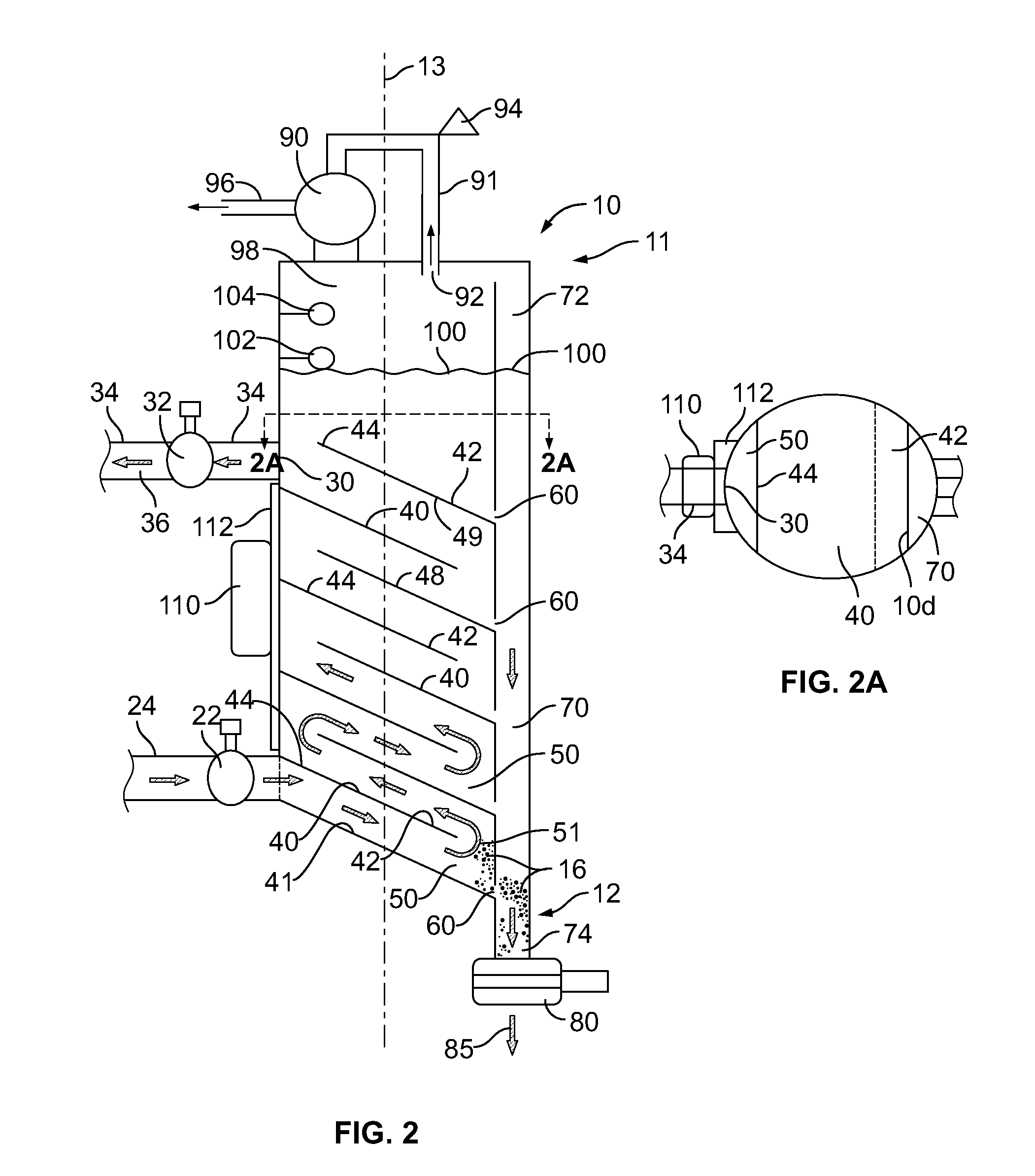Solids removal system and method
a technology of solids removal and solids, applied in sedimentation settling tanks, electrostatic separation, sedimentation regulating devices, etc., can solve the problems of inability to remove low-gravity solids, limited removal of conventional solids control equipment and methods, and increasing the problem of low-gravity solids buildup for operators, etc., to achieve the effect of improving the separation of solids
- Summary
- Abstract
- Description
- Claims
- Application Information
AI Technical Summary
Benefits of technology
Problems solved by technology
Method used
Image
Examples
Embodiment Construction
[0084]Reference is now made to the drawings which depict preferred embodiments of the present invention, but are not drawn to scale. Referring now to FIGS. 1-5, there are shown partial cross-sectional views of various separation tower 10 embodiments in accordance with the present invention for use in the treatment of solids laden water 14.
[0085]In a preferred embodiment, the separation tower 10 is oriented vertically along a longitudinal axis 13, and has an upper end 11 and a lower end 12. The vessel can be any general shape, but a preferred shape would be cylindrical or rectangular. The vessel construction is designed to be a closed system that can withstand the maximum pressure that can be pulled by a vacuum, e.g., approx. 29.92 inches of Mercury.
[0086]A source of contaminated liquid (e.g., a solids / gas laden liquid) 15 is conveyed in the inlet conduit 24 and introduced into the separator 10 via inlet 20. The inlet conduit is in fluid communication between the source of contaminat...
PUM
| Property | Measurement | Unit |
|---|---|---|
| density | aaaaa | aaaaa |
| angle | aaaaa | aaaaa |
| angle | aaaaa | aaaaa |
Abstract
Description
Claims
Application Information
 Login to View More
Login to View More - R&D
- Intellectual Property
- Life Sciences
- Materials
- Tech Scout
- Unparalleled Data Quality
- Higher Quality Content
- 60% Fewer Hallucinations
Browse by: Latest US Patents, China's latest patents, Technical Efficacy Thesaurus, Application Domain, Technology Topic, Popular Technical Reports.
© 2025 PatSnap. All rights reserved.Legal|Privacy policy|Modern Slavery Act Transparency Statement|Sitemap|About US| Contact US: help@patsnap.com



